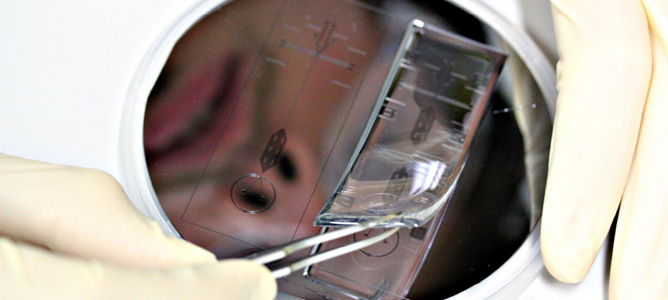Synthesising high quality enzymes

Microfluidic device designs for the production of high quality enzymes
March 2012
Enzymes, organic catalysts capable of facilitating physicochemical and biological reactions, have captured the attention of industry and the scientific community alike. In nature, enzymes are used to catalyse and break down proteins. New methods of synthetic production have vastly broadened the applications of such enzymes to include food processing, textile and paper production, biological detergents and farming, medical and therapeutic processes, fuel production and sustainability practices.
According to Florian Lapierre from CSIRO, one of the major challenges of synthetic enzyme production lies not in the overall yield size, but achieving a product that is of consistently high quality. Using the soft lithography capabilities within the MCN’s cleanroom facility, a micro droplet sorting device has been fabricated and is currently undergoing extensive testing. The prototype is capable of generating amino acid emulsions, synthesising proteins via electrically induced coalescence, detection and subsequent sorting of high quality enzymes. The result is a purified sample, which can then be used for catalytic processes or stored for later use.


